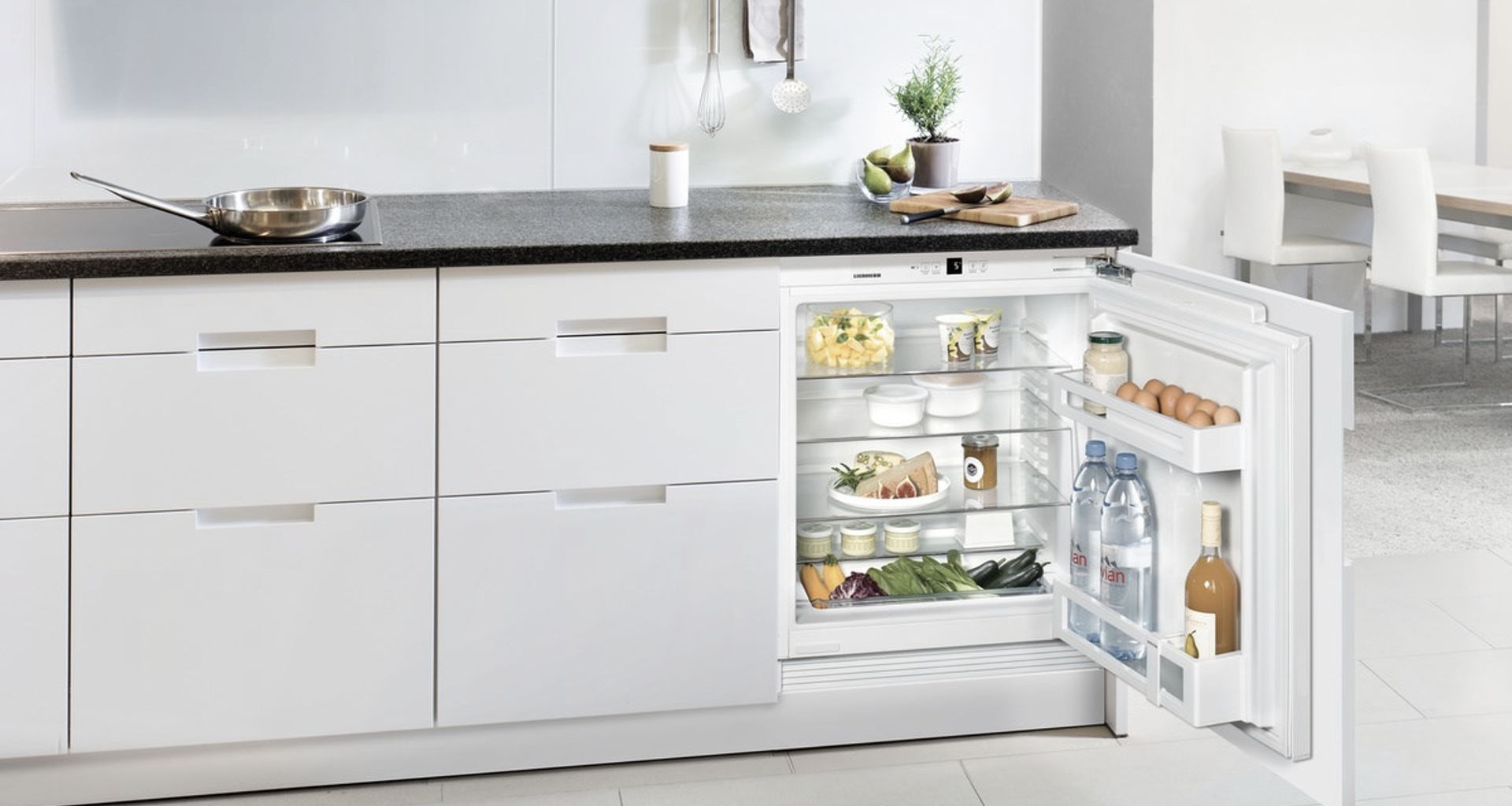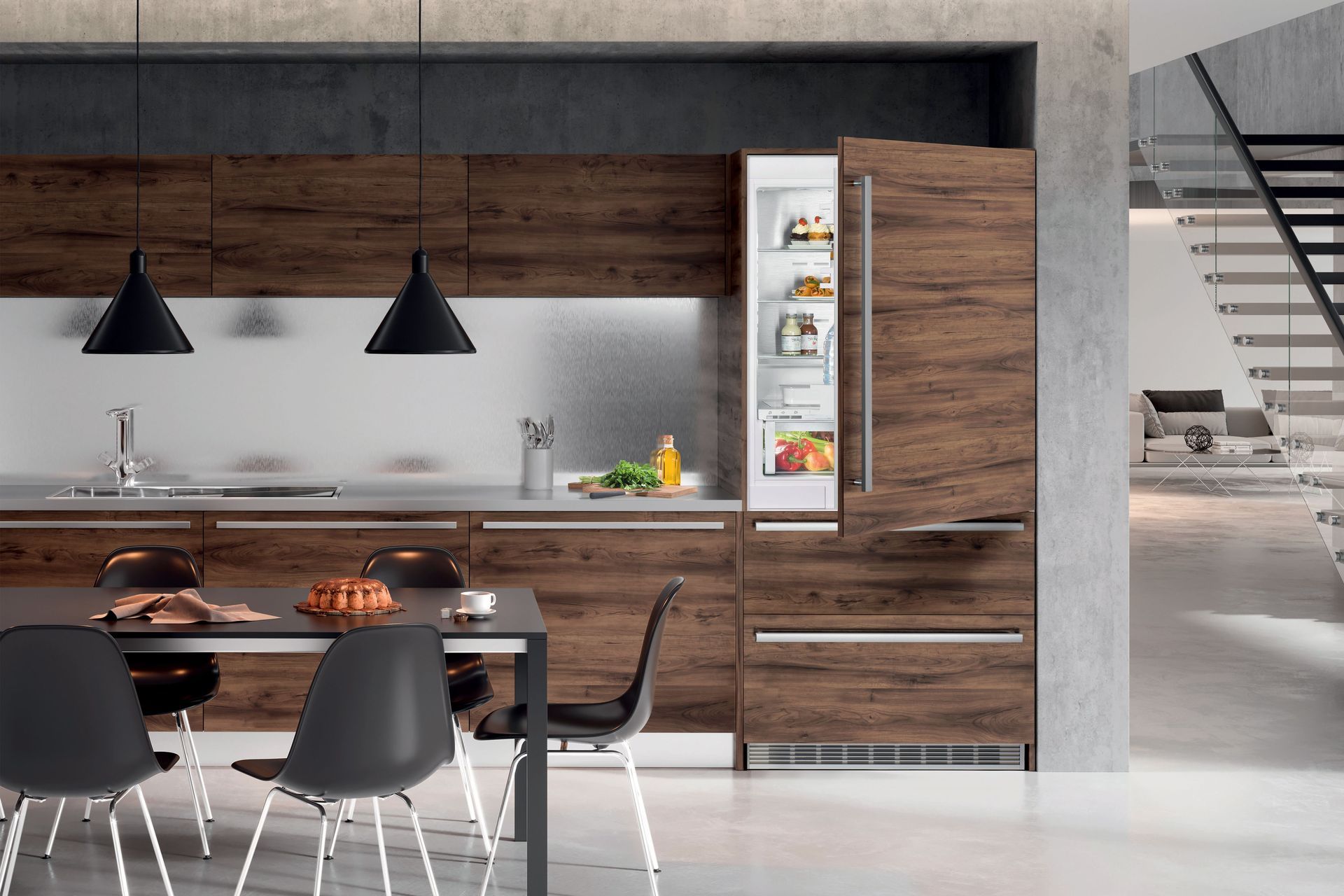How to choose the right fridge
Written by
12 April 2022
•
4 min read

Integrated vs freestanding
The design of your kitchen will naturally influence the style of fridge you choose – perhaps you’d like a minimalist stainless-steel finish, need a fridge that is easy to relocate, or maybe you’d prefer to conceal the fridge entirely.

An integrated finish – where the fridge is concealed within your kitchen’s cabinetry – is the most popular option at the moment, according to Robin Werth, Marketing Manager at Andi-Co, Australian distributor of Liebherr fridges. Your fridge can be integrated into the cabinets or even be built in under a bench.

The alternative to an integrated fridge is a freestanding one, a great option for those who need to be able to relocate the fridge when they move or whose kitchen can’t easily accommodate an integrated one. Contemporary freestanding fridges often have a clean, flat, stainless-steel finish and can sit flush with your cabinetry. If you prefer a darker finish, Liebherr, for example, now offers fridges in BlackSteel, a sophisticated alternative to traditional stainless steel.

What size fridge do I need?
Fridges come in a range of sizes from small and narrow to tall and wide. Obviously, what a single person or couple with a small house or apartment will be seeking will be different to those catering to the needs of large families – school lunches and leftovers need to go somewhere! Robin recommends focusing on the design and usable space of the fridge’s interior, rather than just the number of litres to ensure it meets your needs. Flexible and removable shelving, for example, can be useful if you have a large family or like to host parties, because it allows you to create space for bottles, party food, and storage containers.
Another important factor to consider is the size of the fridge space in your kitchen – traditionally, the standard dimensions for a fridge cavity in an Australian kitchen are 90cm wide x 180cm high x 60cm deep, but if you’re building a new home or renovating your kitchen, design options are virtually limitless. Integrated Liebherr fridges are the same depth as the standard kitchen counter and you and your designer have almost unlimited options in terms of door panel and design.
Other questions Robin suggests asking are: “Are you buying lots of fresh food or are you storing lots of leftovers? Would you prefer French doors: the fridge and freezer side-by-side or a bottom-mount arrangement, where the freezer is below the fridge?”
If you do one big shop a week, specialised compartments might be a useful option to maximise the longevity of your produce, he says. For those storing lots of fresh produce, compartment systems can ensure that produce is kept fresh. Liebherr offers a specialised BioFresh compartment which has a low temperature and high humidity to keep your fresh produce in tip-top shape. For meat and fish, Liebherr’s BioFresh DrySafe compartment is lower in temperature and humidity to keep it fresher for longer.
If you’re a purveyor of fine wine or big on entertaining, you may like to incorporate a wine cellar in your fridge or even have a separate wine cabinet to keep it within easy reach of gathering areas and at the optimal temperature.

Efficiency matters
Seeing as the fridge is an appliance that runs all day and night, energy efficiency is worth considering, especially if sustainability is important to you. An energy rating of four stars or above indicates an efficient fridge – a positive move for the planet and your power bill.
“Liebherr really prides itself on energy efficiency and sustainability in manufacturing, as well as ecological awareness – it was the first company in the Australian market to launch a bottom mount fridge-freezer with an energy rating of 5.5 stars,” says Robin.
Read more about Liebherr fridges here and view their ArchiPro profile here.
Words by Madeline Sarich